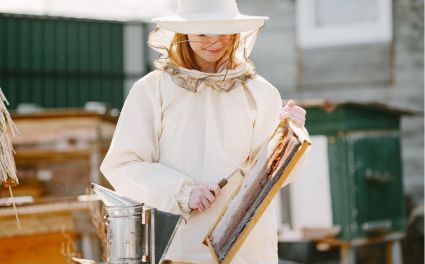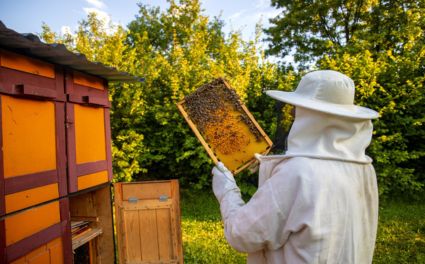To ensure a smooth and efficient beekeeping experience, mastering the art of lighting a smoker is essential. Properly igniting a bee smoker is a crucial aspect of managing bee colonies, as it helps calm the bees during hive inspections and manipulations. Understanding the necessary steps and safety precautions for lighting and maintaining a smoker is fundamental for every beekeeper.
Preparation
Getting ready to light a bee smoker properly involves several important steps. First, it's crucial to gather all the necessary materials, including fuel and tools for ignition, such as matches or a lighter, to ensure a smooth process. Choosing the right kind of fuel, such as pine needles, wood chips, or cardboard, is vital for generating a consistent and safe smoke that won't harm the bees or contaminate the hive's products.
Furthermore, it's essential to ensure the smoker is thoroughly clean and free of any debris before starting the ignition. A clean smoker allows for a clear airflow, which is necessary for producing clean smoke. Clearing out any residual ash or debris from previous use helps prevent any contamination and maintains the quality of the smoke produced. By paying attention to these initial steps, beekeepers can create an optimal environment for the smoker, ensuring it functions efficiently throughout the beekeeping process. This approach not only facilitates effective management of the hive but also promotes a secure and productive beekeeping experience.
Lighting the Smoker
To begin lighting the bee smoker, it's important to place the selected fuel, such as wood chips or cardboard, loosely inside the smoker's chamber. Ensuring the fuel isn't tightly packed allows for proper airflow, enabling a controlled release of smoke. This step is crucial in maintaining a consistent and manageable smoke output, preventing the fuel from burning excessively or extinguishing too quickly.
Igniting the Fuel from Below Using a Lighter or Matches
Once the fuel is properly placed, the next step is to use a lighter or matches to ignite it from below. Ensuring an even ignition throughout the fuel helps generate a steady flow of smoke. Lighting the fuel from below allows for a gradual and steady release of smoke that can be directed appropriately toward the beehive during beekeeping activities.
Allowing the Fuel to Catch Fire and Produce a Steady Stream of Smoke
After igniting the fuel, it is essential to let it burn completely and produce a consistent stream of smoke. This process requires careful monitoring to ensure that the smoke isn't excessive or insufficient for the beekeeping tasks at hand. Maintaining a steady and moderate flow of smoke helps keep the bees calm and facilitates the smooth inspection and management of the hive. Attentively following these steps during the lighting process ensures the efficient and effective use of the bee smoker throughout the beekeeping session.
Maintaining the Smoker
Throughout the beekeeping process, it's important to keep an eye on the smoker and add extra fuel when needed to maintain a steady flow of smoke. This ensures that the bees remain calm during hive inspections and other activities. Regularly checking the fuel level and replenishing it as required is crucial for creating a controlled and effective beekeeping environment.
Adjusting the Airflow to Manage the Smoke Intensity
Managing the airflow is crucial in controlling how much smoke the bee smoker produces. By manipulating the smoker's bellows or vents, beekeepers can regulate the oxygen supply to the burning fuel, directly affecting the volume and density of the smoke. Monitoring and adjusting the airflow according to the bees' behavior and the hive's requirements contribute to a well-regulated and comfortable atmosphere for both the beekeeper and the bees.
Ensuring the Smoker Stays Lit Throughout the Beekeeping Process
Consistently tending to the smoker is essential to keep it lit during all beekeeping activities. A properly functioning smoker not only calms the bees but also makes hive management smoother and more efficient. Regularly checking the flame and addressing any potential issues, such as fuel running low or inadequate oxygen supply, helps maintain a consistent and reliable source of smoke. Making sure the smoker remains operational throughout the beekeeping session is crucial for creating a productive and stress-free beekeeping experience. By attentively managing these maintenance tasks, beekeepers can establish an ideal environment for effectively and safely managing their hives.
Safety Measures
When working with the bee smoker, it's crucial to prioritize personal safety by wearing appropriate protective gear such as gloves and a veil. These items act as essential shields, guarding beekeepers against potential bee stings and reducing the risk of any allergic reactions. Ensuring the proper use of protective gear establishes a safe environment for beekeepers to work confidently and effectively with the bees.
Handling the Lit Smoker with Caution to Prevent Accidental Burns
Given the involvement of fire, it's vital to handle the lit smoker with care to avoid accidental burns. Being mindful of the smoker's temperature and the surrounding area helps prevent any unintended contact with hot surfaces. Practicing careful handling techniques minimizes the likelihood of burns and promotes a secure and hazard-free beekeeping experience.
Also read: The Science Behind Beekeeping Smokers
Storing the Smoker in a Safe and Secure Location After Use
After finishing beekeeping tasks, it's important to store the smoker in a secure location. Placing the smoker in a designated area away from potential fire hazards or flammable materials prevents accidental fires or damage. Proper storage not only extends the smoker's lifespan but also ensures the safety of beekeeping equipment and the surrounding environment.
Adhering to these safety measures is essential for fostering a secure and efficient beekeeping process. By prioritizing personal safety, handling the smoker with caution, and implementing proper storage practices, beekeepers can create a safe and conducive environment for themselves and the bee colony, promoting a successful and sustainable beekeeping experience.
Final Thoughts
In conclusion, mastering the process of lighting a bee smoker is an indispensable skill for any beekeeper. By understanding the importance of properly igniting the smoker and maintaining a steady flow of smoke, beekeepers can create a conducive and safe environment for effective hive management. Adhering to safety measures, such as wearing protective gear and handling the smoker with caution, ensures a secure beekeeping experience. With a well-lit and well-maintained smoker, beekeepers can confidently tend to their hives, fostering healthy bee colonies and promoting a successful and sustainable beekeeping journey.



